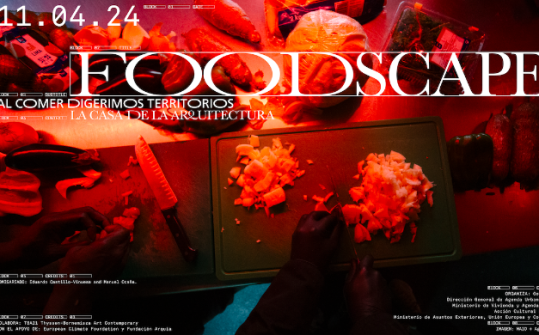How do we build what we eat? This exhibition, stemming from the research and project presented at the 2023 Venice Biennale, Foodscapes, explores the architecture of hunger in Mexico.
How food shapes our cities and landscapes. The exhibition reveals the complex relationship between architecture and food in Mexico. From ancestral cornfields to modern supermarkets, it allows us to discover how we build and consume the food that nourishes us and how this impacts our environment and society.
For a long time, architecture has focused on the metropolis, ignoring and invisibilizing the landscapes and territories without which the event of the city, as such, could not take place. However, cities are not isolated entities, but rather the result of territorial and energy reassembly processes that transcend metropolitan limits, making architecture an event linked to multiple and diverse ecologies. Amidst energy, migration, and environmental debates, food remains in the background, despite the fact that the way we produce, distribute, and consume it mobilizes societies, shapes metropolises, and terraforms geographies more radically than any other energy source.
Through three lines of research, "Food Machines" analyzes the past and present of Mexico's relationship with food, to speculate on the role of technology and politics in future food systems, and how architecture and culture contribute to its transformation. By focusing on the landscapes and architectures that feed the country, an intricate amalgam of artisanal and industrial processes is explored, where hyperlocal production takes place amidst the standardization of the global market; as well as the maintenance of pre-Hispanic agro-architectures, through colonial territorial transformations and community tenure models that persist between official and self-regulated economies.


